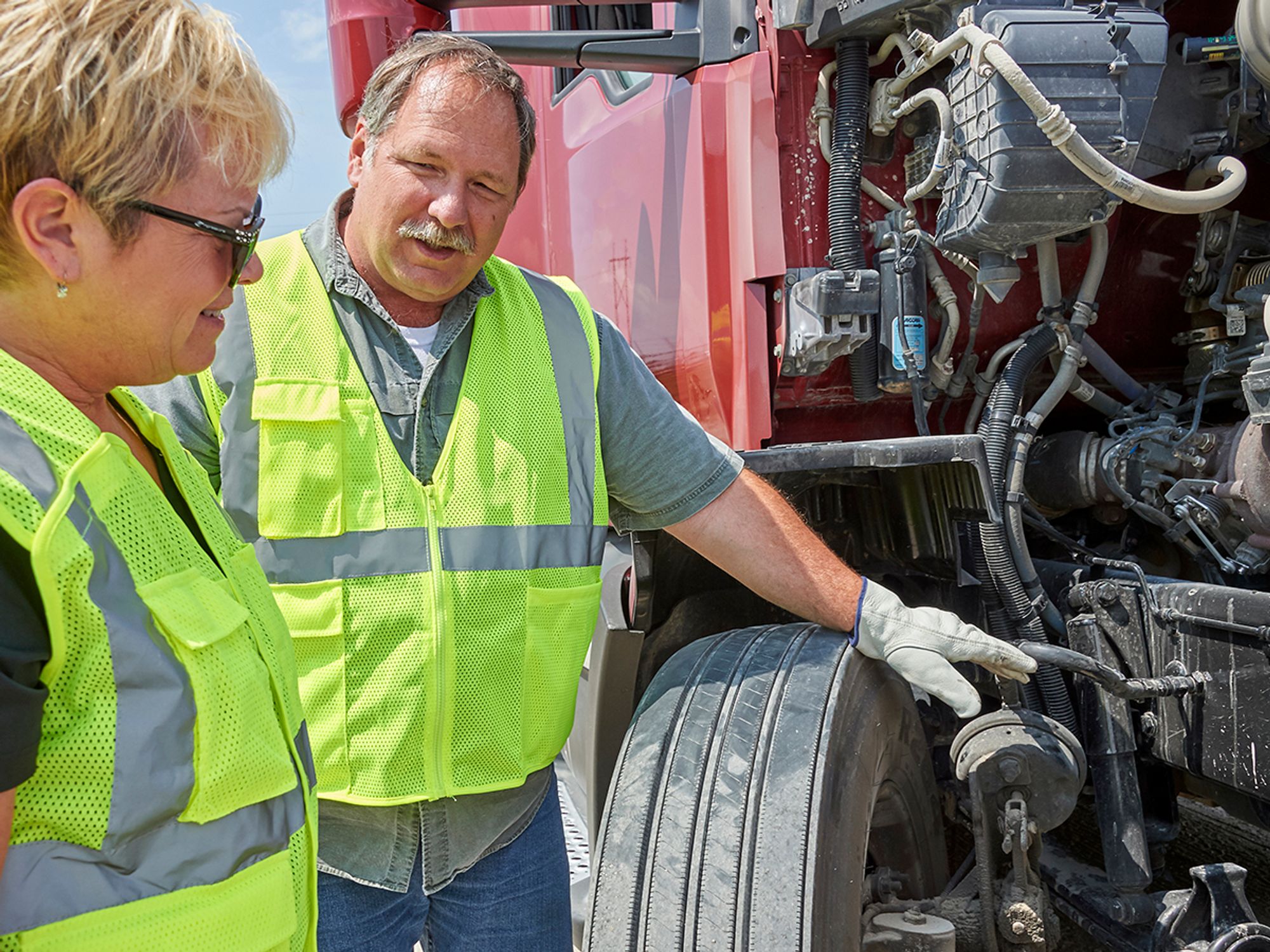Maintenance case study

- Even though the automatic slack adjusters repeatedly required readjusting, the actual brake components were not checked and there was no investigation of the underlying cause, i.e., why the automatic slack adjusters required repeated readjusting.
- Readjusting the automatic slack adjusters was only a “temporary fix,” according to the brake manufacturer’s materials, and the underlying cause of the out-of-adjustment situation needed to be investigated and corrected.
What follows is a case study on how vehicle maintenance scheduling and practices (including recordkeeping and training) can all be combined to create a dangerous (in this case a fatal) situation.
Facts
The National Traffic Safety Board (NTSB) investigated a crash involving an air brake equipped dump truck that was unable to stop while descending a grade in Glen Rock, PA, striking four vehicles that were stopped at an intersection at the bottom of the grade. One of the four other vehicles also struck three pedestrians after being hit by the dump truck.
The brake failure was so complete that even after striking the vehicles the dump truck continued through a gas station, over a set of railroad tracks, coming to rest 300 feet past the intersection. The truck at this point was 407 feet from where it had first impacted another vehicle.
As a result of the accident the driver, owner, and a manager from the company involved were convicted of various criminal violations involving negligence.
The rear brakes on the dump truck were “Type 30” (30 square inches of diaphragm area) and the steer axle was equipped with “Type 16” brakes (16 square inches of diaphragm area). All brake units were equipped with automatic slack adjusters.
Results of the investigation
The post-accident investigation determined that the larger rear brakes had not provided any braking force due to being severely out of adjustment. Because the larger rear brakes were not providing any brake force the smaller front brakes were trying to slow the vehicle and load (the vehicle was found to be overweight at the time of the accident). These brakes quickly overheated during the downhill braking. As a result of the overheating the front brakes “faded” and failed. At this point the vehicle had no braking power.
Discussion
The fact that the rear brakes were out of adjustment was the cause of the accident, therefore the automatic slack adjusters caused the accident, right?
Wrong! The brake units from the vehicle were tested by the NTSB after the accident. During the testing it was discovered that the clevises and pins that attached the brake chamber push rod to the slack adjuster were so badly worn that the automatic slack adjusters could not achieve correct adjustment. As part of the testing the clevises and pins were replaced, and the automatic slack adjusters immediately brought the units into adjustment.
In short, the automatic slack adjusters had not failed. The other brake components on the truck were in such poor condition that the automatic slack adjusters could not function correctly.
The NTSB investigated the truck further and discovered that the truck had the automatic slack adjusters manually readjusted multiple times. The driver that had driven the truck the previous summer had been placed out of service due to the brakes being out of adjustment. To clear the out-of-service violation he manually readjusted the automatic slack adjusters. During that summer the driver stated he had manually readjusted the automatic slack adjusters “at least three or four more times.”
In January, during an annual inspection, the brakes were found to be out of adjustment again. At that time, the mechanic performing the inspection readjusted the automatic slack adjusters.
In April, three days before the Glen Rock accident the truck had rolled into a car. According to the driver the brakes had not “held.” It is not known if the brakes were readjusted after the incident (there is no documentation of a repair).
To sum it up, the automatic slack adjusters on the truck had been adjusted at least five times, and possibly many more times in the previous 12 months. Due to the incomplete records, it is not known exactly how many times the brakes had been adjusted. Also, the company did not include brake components (other than checking adjustment) in their preventive maintenance.
Here is the key point!
No one checked the actual brake components or investigated why the automatic slack adjusters required readjusting. The manufacturer’s material warns that readjusting the automatic slack adjusters is only intended to be a “temporary fix.” The underlying cause must be corrected, or the out-of-adjustment situation will return.
